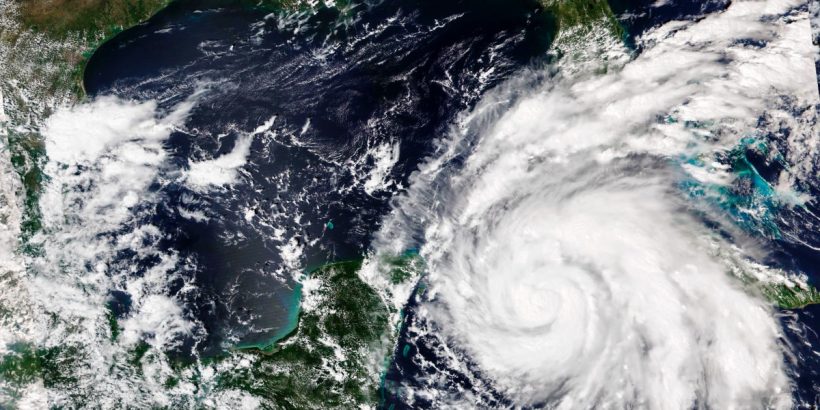Please click and bookmark:


 C-VINE Social Media Channels
C-VINE Social Media Channels 


*C-VINE.Com, https://c-vine.com
*C-VINE-Telegram, https://t.me/CVINENEWS
*C-VINE YouTube Channel, https://www.youtube.com/c/CVINENewsNetwork/videos
*C-VINE Patriot Prayer Brigade, https://www.facebook.com/groups/4826437259486216
News Stories Researched and Posted by our Team of Volunteer Citizen Journalists



Sept 27, 2022
HAVANA—Hurricane Ian tore into western Cuba on Tuesday as a major hurricane, with nothing to stop it from intensifying into a catastrophic Category 4 storm before it hits Florida, where officials ordered 2.5 million people to evacuate before it crashes ashore Wednesday.
Christina Mesquita and Curt Anderson Associated Press
Ian made landfall at 4:30 a.m. ET Tuesday in Cuba’s Pinar del Rio province, where officials set up 55 shelters, evacuated 50,000 people, rushed in emergency personnel, and took steps to protect crops in Cuba’s main tobacco-growing region.
The U.S. National Hurricane Center (NHC) said “significant wind and storm surge impacts” were occurring Tuesday morning in western Cuba. Ian’s sustained top winds were 125 mph (205 kmh) and as much as 14 feet (4.3 meters) of storm surge was predicted along Cuba’s coast.
Ian was forecast to strengthen even more over warm Gulf of Mexico waters, reaching top winds of 140 mph (225 kmh) as it approaches the Florida’s southwest coast. Tropical storm-force winds were expected across the southern peninsula late Tuesday, reaching hurricane force Wednesday morning.
“Right now we’re focusing on west central Florida area as the main area for impact,” hurricane specialist Andy Latto told The Associated Press on Tuesday.
With tropical storm force winds extending 115 miles (185 kilometers) from Ian’s center, damage was expected across a wide area of Florida regardless of where Ian makes landfall. The hurricane center expanded its storm surge warning to the peninsula’s Atlantic coast and expanded its tropical storm warning from Boca Raton to Brunswick, Georgia—a distance of about 375 miles (603 kilometers).
Florida Gov. Ron DeSantis said an estimated 2.5 million people were under evacuation orders. He urged people to prepare for power outages, and to get out of its way.
“When you have five to 10 feet of storm surge, that is not something you want to be a part of,” DeSantis said Tuesday. “And Mother Nature is a very fearsome advisory.”
The hurricane center expanded its hurricane warning to include Bonita Beach north through Tampa Bay to the Anclote River. Fort Myers is in the hurricane zone, and Tampa and St. Petersburg could get their first direct hit by a major hurricane since 1921.
“People on the barrier islands who decide not to go, they do so at their own peril,” Roger Desjarlais, Lee County’s county manager, said early Tuesday. “The best thing they can do is leave.”
As Ian’s center moved into the Gulf, official media began showing scenes of destruction in the country’s world-famous tobacco belt. The Cubadebate website showed photos of devastation at the Finca Robaina cigar producer, where wood-and-thatch roofs were smashed to the ground, and floodwaters flowed through the town of San Juan y Martinez.
More than 1 million Cubans were without power Tuesday morning, including all of the western provinces of Pinar del Rio and Artemisa. There were no reports of deaths.
Ian’s forward movement was expected to slow over the Gulf, enabling the hurricane to grow wider and stronger before it brings punishing wind and water to Florida’s west coast. Forecasters said the surge of ocean water could reach 10 feet (3 meters) if it peaks at high tide. Rainfall could total 16 inches (41 centimeters) with as much as 24 inches (61 centimeters) in isolated areas. Coastal communities could be inundated.
As many as 300,000 people may be evacuated from low-lying areas in Hillsborough County alone, county administrator Bonnie Wise said. Some of those evacuations began Monday afternoon in the most vulnerable areas, with schools and other locations opening as shelters.
“We must do everything we can to protect our residents. Time is of the essence,” Wise said.
Lee County—where Fort Myers is on Florida’s southwest Gulf Coast—also issued mandatory evacuations early Tuesday for low-lying areas including Fort Myers Beach, Sanibel, and Bonita Beach, where about 250,000 people live, after forecasters expanded the hurricane warning area.
“With the kind of tidal surge we’re talking about, it would not be uncommon for both islands to be overwashed, and it’s a dangerous place to be,” Desjarlais said. “We cannot by law force people off the islands, but we strongly recommend that they go.”
Floridians lined up for hours in Tampa to collect bags of sand and cleared store shelves of bottled water. DeSantis declared a statewide emergency and mobilized 5,000 Florida National Guard troops, with another 2,000 on standby in neighboring states.
In Key West, the airport closed Tuesday as gusty rains from the storm added to a king tide to swamp the streets, prompting animal rescuers to delay venturing out until after Ian passes. In Orlando, Disney World closed four hotels as a precautionary measure while holding off on any decision to shut down its theme parks. In Florida’s northeastern corner, the U.S. Navy said it planned to move ships and aircraft from its base outside Jacksonville.
Playing it safe, NASA was rolling its moon rocket from the launch pad to its Kennedy Space Center hangar, adding weeks of delay to the test flight. The airports in Tampa and St. Petersburg announced they’ll close Tuesday afternoon.
President Joe Biden also declared an emergency, authorizing the Department of Homeland Security and the Federal Emergency Management Agency (FEMA) to coordinate disaster relief and provide assistance to protect lives and property. FEMA has strategically positioned generators, millions of meals, and millions of liters of water, White House press secretary Karine Jean-Pierre said.
Damaging winds and flooding are expected across the entire peninsula as Ian moves north, reaching into Georgia, South Carolina and other parts of the southeastern U.S. between Friday and Sunday, the hurricane center said.